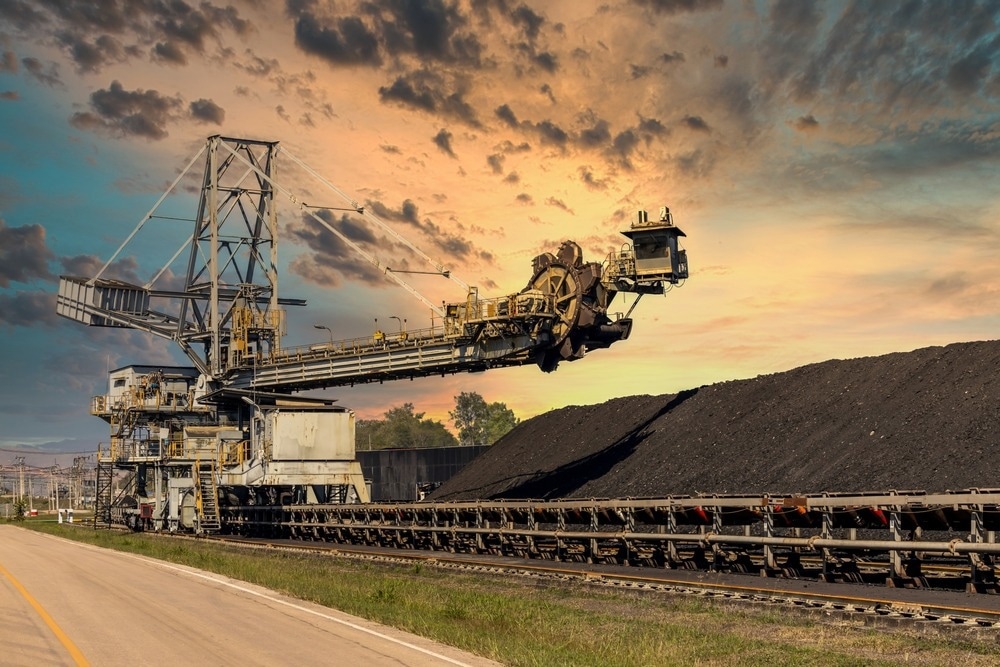In a recent article in the journal Sustainability, researchers from China focused on predicting the risk of coal and gas outbursts in deep mining under the influence of high geothermal temperatures. The study aims to analyze the impact of temperature variations on relevant parameters for outburst risk prediction methods.

Image Credit: Avigator Fortuner/Shutterstock.com
Background
Coal and gas outbursts pose significant risks in mining operations, with temperature crucial in coal's adsorption and desorption processes. Gas expansion energy is a key factor in determining the occurrence and scale of outbursts, highlighting the importance of understanding temperature effects on predictive indicators.
The Current Study
The study utilized a coal seam outburst mechanism model to understand the rapid release of energy during the pre-exposure stage of coal. This model focused on releasing highly pressurized compressed gas, predominantly methane, and its impact on outburst progression. Gas volume, gas pressure, and gas content within the coal seam were key parameters considered in the model, along with the degree of coal fragmentation. The model illustrated the dynamics of gas desorption during the outburst process and emphasized the importance of gas temperature in influencing the occurrence and development of outbursts.
From an energy perspective, the study analyzed the conditions necessary for outburst occurrence, emphasizing the balance between gas expansion energy and the potential energy of strata stress.
The elasticity energy of coal and rock was also considered in determining the energy required for coal fragmentation and movement. Gas expansion energy emerged as the primary driving force behind outbursts, playing a crucial role in coal mass ejection and gas dynamic phenomena. The study highlighted the significance of gas pressure and expansion energy in predicting outburst occurrences and determining critical values for evaluation.
Experimental measurements were conducted to assess the impact of temperature on predictive outcomes related to coal and gas outburst risk. To analyze their correlation and variations, the study measured gas expansion energy, gas pressure, and other relevant parameters under varying temperature conditions. The research aimed to identify critical values for gas parameters at specific temperatures to enhance the accuracy of outburst risk predictions in deep mining operations.
Data obtained from experimental measurements were analyzed to determine the effects of temperature on predictive indicators and critical values. The study compared trends and conclusions regarding different gas parameters under varying temperatures to understand the variations in outburst risk assessment. The analysis focused on identifying optimal indicators for predicting outburst risk and assessing the practical application of the research findings in engineering practice.
Results and Discussion
The measurements indicated a substantial impact of temperature on predictive outcomes related to coal and gas outburst risk. The study identified varying degrees of temperature influence on different gas parameters, emphasizing the need for a comprehensive understanding of temperature effects in outburst risk assessment. Contradictory trends in the influence of temperature on gas parameters underscored the challenges in predicting outburst risks accurately in deep mining operations.
Gas expansion energy emerged as a critical factor in determining the occurrence and scale of outbursts. The study highlighted the primary role of gas expansion energy in triggering coal mass ejection and driving the outburst process. Understanding the relationship between gas pressure, expansion energy, and critical values under different temperature conditions provided valuable insights into the dynamics of outburst events in deep mining environments.
The research emphasized the importance of identifying optimal indicators for predicting outburst risk under the influence of temperature variations. The drill cutting desorption index K1 value and gas content index Q were identified as key indicators with high sensitivity and correlation with expansion energy. These indicators were crucial for enhancing the accuracy of outburst risk predictions and guiding decision-making in mining operations.
The study's findings have practical implications for improving outburst risk assessment in deep mining operations facing high geothermal temperatures. The research highlighted the need for further validation of experimental results in engineering practice to enhance the reliability and applicability of predictive indicators. Future research should focus on refining predictive models, validating critical values, and exploring new methodologies to address the challenges posed by temperature variations in outburst risk assessment.
Conclusion
The research concludes that while temperature directly affects coal adsorption and desorption processes, its influence on gas expansion energy is relatively small. This suggests that temperature alone may not significantly impact the outburst process, but it does affect predictive parameters and critical values. Future studies should focus on validating experimental results in engineering practice to enhance the accuracy of outburst risk predictions in deep mining operations.
Source:
Yang, D., Wang, S., et al. (2024). Research on the Influence of Temperature on the Assessment of Coal and Gas Outburst Dynamic Risk in Deep Mining. Sustainability, 16, 4831. https://doi.org/10.3390/su16114831